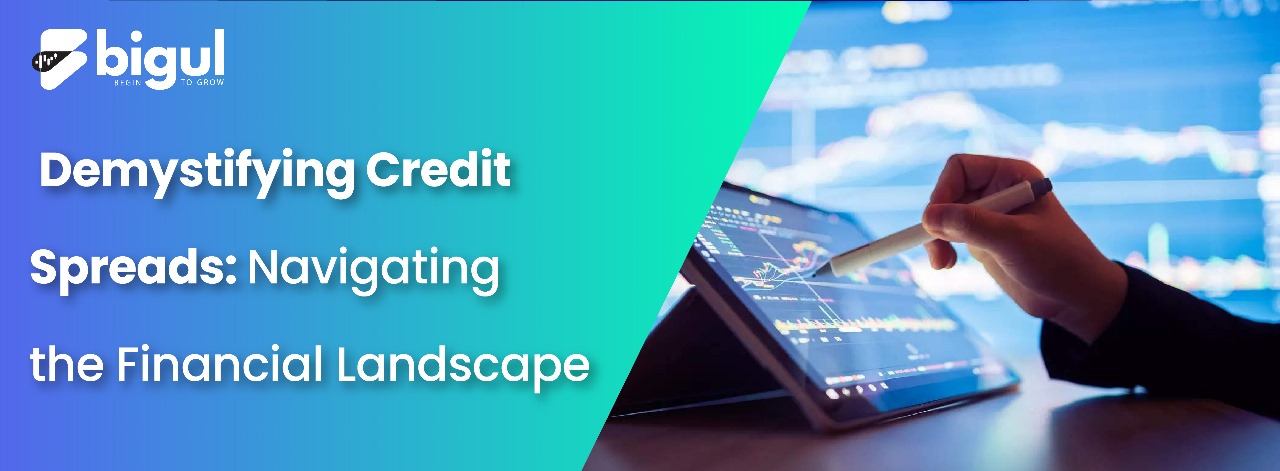Credit spreads are like the little signals in the financial world that tell us about risks and opportunities. Imagine you want to lend money to a friend. You know there’s a chance they might not give it back.
So, you ask for a little extra money just in case – that’s like a credit spread. In the world of money and investing, credit spreads show us how much extra interest we can get when we lend money to a company or when we buy certain investments.
These spreads help us understand if people think a company is doing well or not so well. Understanding credit spreads can help us make better financial decisions and stay ahead. Learn more about this interesting concept.
Also Read | What Is Bull Call Spread Strategy? Options Strategy
What Are Credit Spreads?
Credit spreads offer a way to compare the risk between two financial assets, usually bonds or loans, based on their interest rates or yields.
A positive credit spread signifies a higher yield on a riskier instrument compared to a safer one. It reflects the market’s perception of credit risk.
For options trading, credit spreads involve simultaneously selling and buying options with different strike prices, generating upfront premiums and capping potential profits at a defined level.
These strategies aim to benefit from time decay and relative price movements.
Types of Credit Spreads
There are two main types of credit spreads:
-
Bull Put Spread (Vertical Put Credit Spread)
This strategy involves two key actions:
- Selling a put option at a lower strike price.
- At the same time, buying a put option at a higher strike price.
Traders opt for this when they predict a mild increase in the price of the underlying asset. The main objective? Earn from the premium, all while setting a cap on possible losses.
-
Bear Call Spread (Vertical Call Credit Spread)
Here’s how it works:
- A call option is sold at a higher strike price.
- Simultaneously, another call option is bought at a lower strike price.
This strategy comes into play when traders foresee a slight dip in the underlying asset’s price. The goal remains the same: pocket the premium and control potential losses.
Both types of credit spreads involve selling one option and buying another to create a net credit upfront. They allow traders to benefit from time decay and moderate price movements, managing risk and potential profit.
Factors Influencing Credit Spreads
Credit spreads depend on several factors. These are macroeconomic, market-specific, and issuer-specific factors. The following factors affect credit spreads:
1. Economic Condition
Economic conditions significantly impact credit spreads. During economic growth, spreads narrow as confidence in companies’ ability to meet obligations rises.
Conversely, recessions widen spreads due to higher uncertainty about corporate stability.
2. Market Liquidity
Market liquidity impacts credit spreads. In illiquid markets, where trading is challenging, investors demand higher yields for the added risk. This leads to wider credit spreads.
Conversely, in liquid markets, where trading is smoother, spreads are narrower as investors are more willing to accept lower compensation for the perceived lower risk associated with ease of trading.
3. Supply and Demand Dynamics
Supply and demand imbalances in the corporate bond market influence credit spreads. If more corporate bonds are issued than investors want to buy, spreads may widen as investors demand higher yields to compensate for the excess supply.
Conversely, if demand outstrips supply, spreads may narrow as investors are willing to accept lower yields for the limited available bonds.
For instance, if a sudden surge in bond issuance from multiple companies occurs simultaneously, investors may demand higher yields, causing credit spreads to increase.
4. Industry and Sector Trends
Different industries and sectors have unique levels of risk and sensitivity to economic changes. These sector-specific factors, such as regulations, technology shifts, and market trends, can significantly influence credit spreads.
Changes in an industry’s prospects or regulatory environment can affect investor confidence. This led to shifts in demand for bonds and consequently impacted the spreads between corporate and government bonds.
Credit Spread Strategies
Credit spread strategies involve using options contracts to take advantage of the price movements and volatility in the underlying asset while managing risk. Here are a few common credit spread strategies:
1. Bull Put Spread (Vertical Put Credit Spread)
In the Bull Put Spread, traders sell a put optionsZ at a low strike price and buy another put at a higher one. It’s a favourite for those anticipating a stable or bullish market scene. While traders get a net credit at the start, they agree to a fixed profit potential and a set risk.
If the asset’s value stays consistent or climbs, the options might become worthless. This means the trader can hold onto the premium. But if there’s a substantial dip in price, losses are confined to the gap between the strike prices minus the received premium.
2. Bear Call Spread (Vertical Call Credit Spread)
A bear call spread is another options strategy where a higher-strike call option is sold while simultaneously buying a lower-strike call option.
This strategy is used when anticipating a decline or neutral movement in the underlying asset.
The aim is to generate an upfront premium while limiting potential losses. Maximum profit occurs if the asset’s price stays below the higher strike. This spread allows traders to benefit from time decay and controlled risk, but with capped profit potential.
3. Iron Condor
The Iron Condor is a tad more intricate. It involves:
- Selling a put option at a lower strike.
- Buying a put at an even lower strike.
- Selling a call option at a higher strike.
- Buying a call at an even higher strike.
This strategy is perfect for markets that exhibit low volatility. Its aim? Reap profits from a market that stays within a range, combined with the time decay. Think of it as blending a Bull Put Spread and a Bear Call Spread, capitalizing on stable price movements within a set range and timeframe.
4. Ratio Spreads
Ratio spreads involve selling more options than purchased, creating an imbalanced spread. For instance, a ratio call spread involves selling more call options than buying.
This advanced strategy can profit from significant directional moves while benefiting from volatility changes. It’s riskier due to the potential for unlimited loss on one side.
Traders must carefully assess market trends and volatility to execute this strategy effectively.
Conclusion
Understanding credit spreads is vital for successful financial management. A credit spread involves the difference in interest rates or yields between two financial instruments.
Using the credit spread option strategy can provide opportunities for investors to manage risk and generate income.
By grasping the mechanics of credit spreads, individuals can make informed decisions, enhance their portfolio’s diversification, and navigate the complexities of the financial market more effectively.
Also Read | Calendar Spread Options Strategy: A Guide for Options Traders

.jpg)






.jpg)
.jpg)
